Table of Contents
Oil Leak from Camshaft Magnet: Case Study in Mercedes-Benz S-Class W222
An oil leak from camshaft magnet may seem like a minor issue at first, but if left unaddressed, it can lead to electrical faults, engine contamination, and long-term performance degradation. This is particularly common in various Mercedes-Benz engines, including the M276 used in the S-Class W222.

In this case study, we share a real workshop scenario where an S-Class presented with visible oil trails on the engine. A precise inspection revealed that the source of the leak was the camshaft magnet, a component involved in variable valve timing.
Below, we walk you through the entire diagnostic process, cause identification, and the correct repair method.
Customer Complaint
The customer reported oil stains forming under the engine bay and visible oil residue on the side of the engine. There were no warning lights or check engine alerts at the time, but the leak was worsening.
Upon inspection, the technician quickly traced the oil trail to a specific location—near the camshaft magnet on the front of the engine, close to the timing cover.
Diagnosis and Visual Inspection
To confirm the oil leak from camshaft magnet, we performed the following steps:
- Visual Inspection: Oil trails were clearly visible around the cam magnet and running along the timing cover.
- Connector Check: Upon removing the electrical sockets connected to the camshaft magnets, oil was found inside the connector housing a common sign of a seal failure.
- Component Removal: Once the camshaft magnet was removed, we observed damaged rubber beading (O-ring) around the sealing surface, confirming the source of the leak.
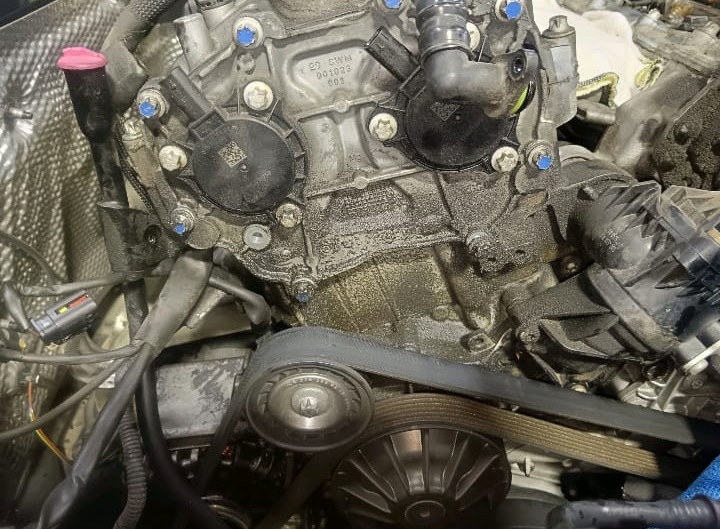
This oil leak not only contaminated surrounding components but also had the potential to affect sensor signals, leading to miscommunication between the camshaft and the ECU.
Root Cause: Faulty Camshaft Magnet Seal
The M276 engine is known for issues related to aging or hardened seals on camshaft magnets. Over time, the rubber seal surrounding the magnet wears out, allowing engine oil to seep into the electrical connector and around the timing cover area.
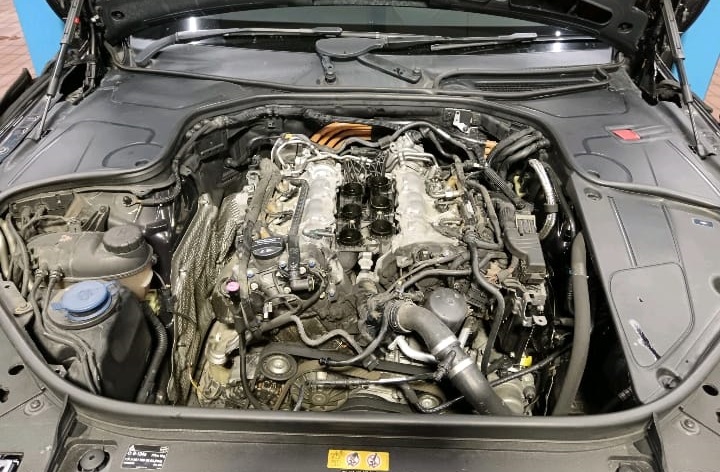
In this case, the rubber O-ring had visibly deteriorated and lost its ability to maintain a tight seal.
Repair Procedure
The most effective solution for fixing an oil leak from camshaft magnet is complete replacement of the affected magnet with a new OEM part. Here’s a simplified version of the repair process:
Step-by-Step:
– Disconnect the battery to avoid electrical damage.
– Remove the engine cover for better access.
– Detach the electrical connectors from the camshaft magnets.
– Unscrew and remove the faulty magnet.
– Clean the area thoroughly to remove oil residue.
– Install the new camshaft magnet with fresh sealing.
– Reconnect all wiring and components.
– Start the engine and check for leaks.
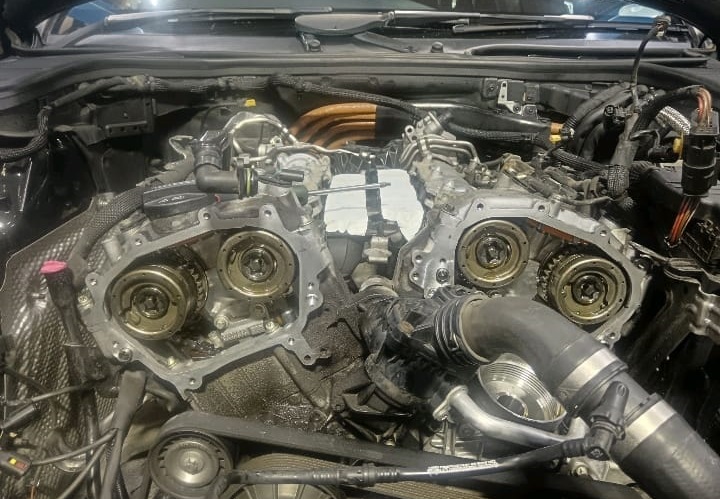
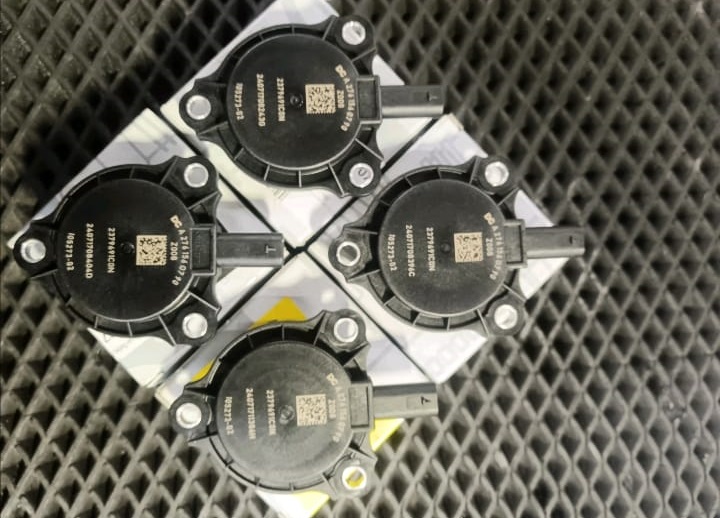

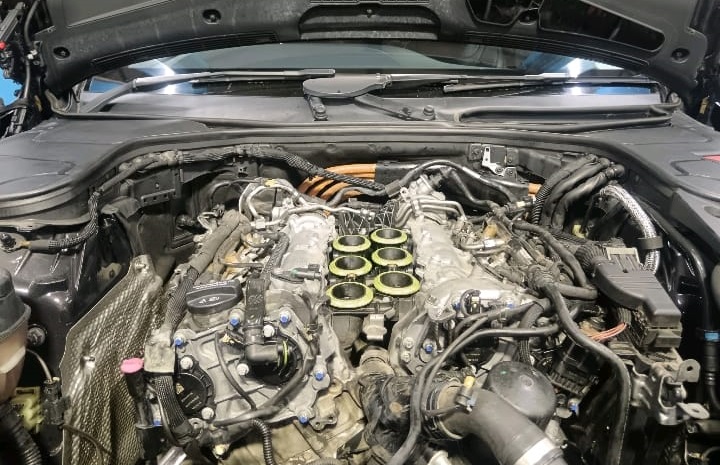
Final Checks
After replacing the camshaft magnet, we performed a final inspection:
- – No visible oil trails remained.
- – Electrical connectors were clean and dry.
- – Engine was run for 15+ minutes to monitor for any reoccurrence.
- – No warning lights or error codes were detected in the engine control unit.
The oil leak from camshaft magnet was fully resolved, and the vehicle was returned to the customer with clear maintenance recommendations.
What causes oil leak from camshaft magnet in Mercedes-Benz engines?
An oil leak from the camshaft magnet is typically caused by the deterioration of the rubber O-ring or seal around the magnet. Over time, engine heat, pressure, and oil exposure cause the seal to harden or crack, allowing oil to seep out. This is a common issue in Mercedes-Benz engines like the M276.
Oil can then leak onto the timing cover and even into the electrical connector, potentially causing signal interference or ECU communication errors. Lack of routine inspection and age-related wear are the primary contributors to this problem, making preventive maintenance essential.
Can I drive with an oil leak from camshaft magnet?
While your Mercedes-Benz may still run with an oil leak from the camshaft magnet, driving in this condition is not advisable. The leaking oil can enter electrical connectors, leading to short circuits or signal interruptions in the variable valve timing system.
If left unchecked, this can cause engine performance issues, rough idling, or even trigger warning lights and fault codes. Additionally, continuous oil leakage can spread to surrounding components and increase repair costs.
For optimal safety and to avoid further damage, it’s best to have the leak diagnosed and repaired as soon as it’s noticed.
How much does it cost to fix oil leak from camshaft magnet?
The cost to repair an oil leak from the camshaft magnet in a Mercedes-Benz typically ranges between €250 and €450. The camshaft magnet part itself usually costs €100–€200, while labor adds €150–€250, depending on the workshop’s hourly rate and vehicle access difficulty.
Prices may vary based on your location and whether you’re using genuine or aftermarket parts. In some cases, if multiple magnets are leaking, technicians may recommend replacing them all at once to avoid repeat visits.
Investing in OEM parts and professional service ensures a longer-lasting and more reliable repair.
Is camshaft magnet the same as camshaft solenoid?
Yes, in most Mercedes-Benz engines, the terms camshaft magnet and camshaft solenoid are often used interchangeably. This component plays a vital role in controlling the variable valve timing system, adjusting the timing of the intake and exhaust valves based on engine load and RPM.
It works by using electrical signals to control oil flow to the camshaft adjusters. A malfunction or leak in this part can affect engine performance and trigger warning lights.
Whether referred to as a magnet or solenoid, it serves the same essential purpose and requires timely maintenance to prevent oil leaks and electrical faults.
Conclusion
If your Mercedes-Benz S-Class W222 shows signs of an oil leak from camshaft magnet, don’t ignore it. Prompt diagnosis and replacement can prevent further engine damage and electrical faults. In our case, a simple magnet replacement restored the engine’s integrity and protected vital components from contamination. Always opt for genuine parts and professional diagnostics to ensure a long-lasting solution.
Author
Written by: Mercedes Expert
Automotive Technical Trainer & Mercedes-Benz Diagnostic Specialist
With years of hands-on experience repairing and diagnosing Mercedes-Benz vehicles, specializes in case-study-based troubleshooting guides that blend workshop accuracy with educational clarity.
Last Updated: November 2025

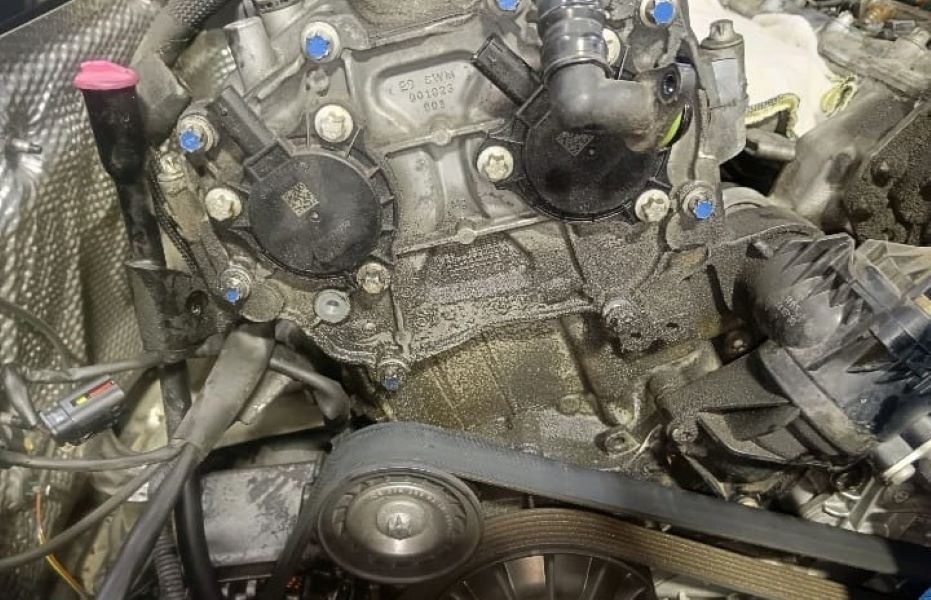



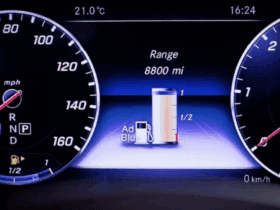
Leave a Reply